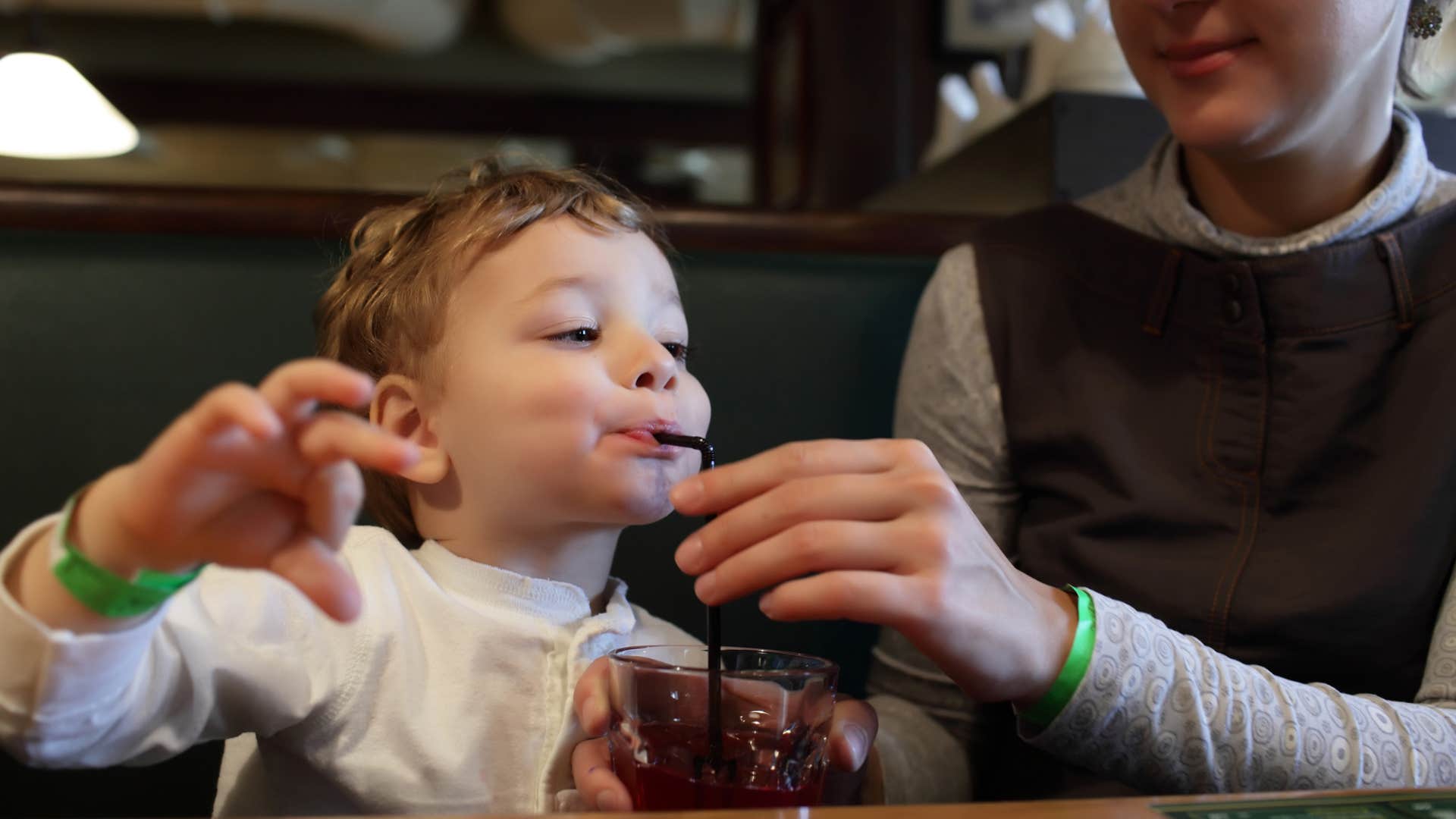11 Things Working-Class Kids Grew Up Thinking Were Luxuries
It's these memories, experiences, and treats that stuck with them.
 Alex Uksta | Shutterstock
Alex Uksta | Shutterstock Kids learn how to behave, speak, and interact with others from their parents — the first relationships and people they're surrounded by in their lives. However, they also tend to learn more nuanced ideas about life, like financial literacy, spending habits, and social belonging, from their parents. For example, working-class kids have much different ideas about status symbols and wealth than their peers who grew up in upper-class families.
Many of the things working-class kids grew up thinking were luxuries felt special and memorable in their routines. Whether it was food from the grocery store, gifts their parents saved to give them, or trips that held a ton of memories for their family, their parents' intentional choices and mindsets around money crafted their idea of what's special and important to them in life.
Here are 11 things working-class kids grew up thinking were luxuries
1. Going out to eat
 Dragan Grkic | Shutterstock
Dragan Grkic | Shutterstock
Going out to eat at a "sit-down restaurant" was much more of a luxury than eating at a fast food restaurant or at home for kids who grew up in working-class households. Not only did their parents often live paycheck-to-paycheck, paying for rent, housing, groceries, and other basic necessities, they had little in savings to spend on things like a restaurant meal.
Of course, on special occasions or holidays, some working-class households did use going out to eat or buying a treat to celebrate, which crafted the idea that it's a "luxury," rather than a necessity for these children.
2. New clothes
 BearFotos | Shutterstock
BearFotos | Shutterstock
Like a study from the Journal of Poverty explained, many working-class or poor households are subjected to the allure of consumption — from advertisements, to status symbols, and other aspects of comparison culture — without being able to fully participate in it.
Whether that's a fancy house, a luxury car, having free time, or even buying new clothes, it can feel disillusioning for these working-class people to constantly compare themselves to others who can spend on these things without reservation.
However, working-class families often feed into a different consumer cycle, one of redistribution and recycling. They hardly bought things new, whether that's clothes or cars, so their kids got used to viewing new items, rather than thrifted goods, hand-me-downs, or secondhand items, as "luxuries" and status symbols of wealthier families.
3. Vacations
 Mladen Zivkovic | Shutterstock
Mladen Zivkovic | Shutterstock
According to a study published in the Journal of Experimental Social Psychology, it's typically these moments, experiences, memories, and traditions that people hold with them into adulthood. They craft long-lasting satisfaction, connection, and happiness, compared to material possessions like new toys and clothes.
So, yes, they're literally a luxury from a financial perspective for many of these working-class families, but they're also a metaphorical luxury, giving families the chance to bond with each other outside the scope of daily responsibilities and stress.
4. Dishwashers
 PeopleImages.com - Yuri A | Shutterstock
PeopleImages.com - Yuri A | Shutterstock
Despite being one of the least-used appliances in many households, dishwashers are still one of the things working-class kids grew up thinking were luxuries.
If they didn't have one in their living space, they were doing the dishes by hand. If they did have one, chances are they were policed for filling it up perfectly and only running it a certain amount of times to save money and water.
So, of course, unrestricted access to a dishwasher — like many of the other sought-after status symbols — is a luxury working-class kids wish they had.
5. Ordering drinks at a restaurant
 Chubykin Arkady | Shutterstock
Chubykin Arkady | Shutterstock
In many cases, saving money and setting up financial comfort is reliant on little choices in your daily life. Whether that's taking public transportation, turning off lights, or choosing to not order soda or alcohol at a restaurant, it's these intentional decisions that lead to a big payoff at the end of the day.
For many working-class families, who already considered going out to eat to be a treat and a luxury, not ordering drinks, and instead opting for water, was one way to cut costs. Of course, that taught their kids to appreciate and value treats like soda, but it also set them up to save money in small ways.
6. New toys
 VGstockstudio | Shutterstock
VGstockstudio | Shutterstock
Much like their clothes and homemade gifts, getting new toys is one of the things working-class kids grew up thinking were luxuries. Considering most families in their income level most commonly use thrift stores and secondhand shops to purchase the majority of their necessities and apparel, according to a study from Family Relations, it's not surprising that things like birthday gifts or holiday presents also come from these places.
Compared to middle- and upper-class kids, who received new toys with every grocery store trip or passing holiday, they're much less special and sacred. But for kids from working-class households, a new toy is a status symbol and a true luxury they learn to take care of.
7. New books
 Dejan Dundjerski | Shutterstock
Dejan Dundjerski | Shutterstock
Libraries are incredibly important to building community, but they can also genuinely impact childhood development, later success, and educational attainment, according to a 2021 study, especially in low-income neighborhoods. Kids who have access to libraries in their communities boast more academic success, but they're also more likely to pursue high-paying careers and higher education.
However, checking out books and reading in a library may actually frame new books as luxuries for these kids. Many don't realize the profound benefits of libraries until they're actively living them in adulthood, so their mentality around buying new books and having a library of their own feels like a matter of status and wealth early in life.
8. Snacks
 PeopleImages.com - Yuri A | Shutterstock
PeopleImages.com - Yuri A | Shutterstock
While studies, like one from Preventive Medicine, argue that lower-income households tend to purchase less nutritious foods — relying on fast food, processed options, and cheap meals to save money and feed their families — having snacks just for themselves is one of the things working-class kids grew up thinking were luxuries.
They envied their peers who had a cupboard full of after-school snacks and fun treats in their lunchboxes, because their parents were forced to budget their grocery trips and only buy what was absolutely necessary to sustain them through the week. So, it's not just fresh produce and meats that were luxuries to parents, but the freedom of choice for kids when it came down to snacks.
9. Going to the movies
 Drazen Zigic | Shutterstock
Drazen Zigic | Shutterstock
According to a YouGov survey, more than half of Americans believe that going to the movies is too expensive, especially alongside rising transportation costs, ticket prices, and concessions. It's no longer a fun and cheap weeknight activity to go see a movie, but a luxury, especially for working-class and low-income families that are already budgeting down to their last dollar.
It's one of the things working-class kids grew up thinking were luxuries, because while their friends' families went out to the movies, got dinner at a restaurant, and ate ice cream on a weeknight, they were at home with their families or watching their siblings.
10. Matching home decor
 La Famiglia | Shutterstock
La Famiglia | Shutterstock
Whether it's matching towels, cohesive artwork on the walls, or fancy bed spreads, matching home decor and decorations are some of the things working-class kids grew up thinking were luxuries. From going to friends' houses to staying with other family members, they couldn't help but notice how differently middle- and upper-class families' homes looked than their own.
Of course, the nature of secondhand shopping and recycling is part of the reason working-class families made cohesion in their home decor less of a priority. They're more focused on saving money and buying things that will last than matching their bathroom towels to their rugs.
11. Brand name school supplies
 PeopleImages.com - Yuri A | Shutterstock
PeopleImages.com - Yuri A | Shutterstock
For kids from working-class families, it's the small experiences and comparisons that stick with them. For example, having a generic notebook on the first day of school when their friends have brand name ones with personalized colors and stickers. Even going on a field trip and seeing everyone else in their fancy winter coats and brand name backpacks is enough to make them compare.
That's why brand name school supplies, from water bottles to pencils, are some of the things working-class kids grew up thinking were luxuries. They didn't have the freedom to pick things out or personalize their belongings, but instead were pressured into the cheapest option out of necessity.
Zayda Slabbekoorn is a staff writer with a bachelor’s degree in social relations & policy and gender studies who focuses on psychology, relationships, self-help, and human interest stories.

